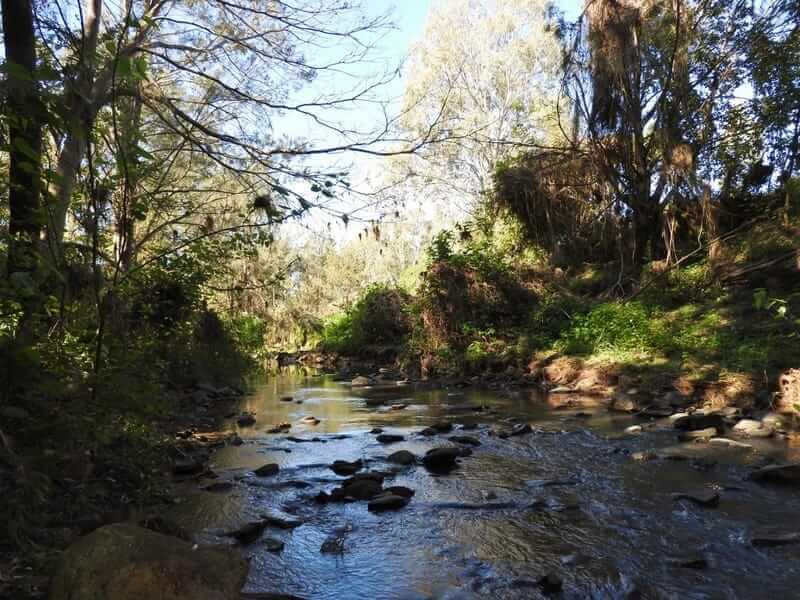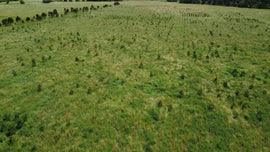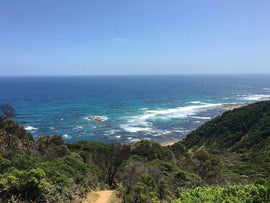Due to the drought, the planning and timing of this project was impacted by many factors. In preparation, the soil was deep ripped (pictured) so that there would be increased water retention when rain did occur. Planting also took place later than usual for this part of Australia to increase the chance of rain for the seedlings. In fact, the planting coincided with the heaviest downpour the region had seen since summer 2018/2019.
The extreme drought has also created pressure for the region’s farming community. One of the aims of this project was to increase the productivity of the land by growing shelterbelts that will protect cattle from the elements. Over 19,000 native trees have been planted since 2019. Some of the 21 native tree species planted include the Western Silver Wattle (Acacia decora), Red Stringybark (Eucalyptus macroryncha) and Silver Banksia (Banksia marginata).
Using regenerative farming methods on this property means the land is given the opportunity to regrow. The movement of cattle between different paddocks gives the land and grass time to regenerate. In traditionally farming, cattle can graze the same area indefinitely which can be harmful to the quality of the land.
One of the other positive impacts of this project is on native wildlife. The trees growing in the shelterbelts will assist in the movement of bird life from one area of forest to another, essentially creating corridors for native bird species. Hopefully, the trees will also restore habitat for native sugar gliders (Petaurus breviceps) and the Yellow Box (Eucalyptus melliodora) included will create potential habitat for the endangered Regent Honeyeater (Anthochaera phrygia).
The trees growing in the shelterbelts at Hillview will sequester carbon very effectively as they have additional access to nutrients and light. This means that the surface area to volume ratio is very good for the planting’s carbon yield. The trees are protected for 100 years and over their lifetime, will absorb more than 8,400 tonnes of CO2-e from the atmosphere. This is the equivalent of removing nearly 2,000 average sized cars from the road for a whole year!
You can support projects such as this and offset your carbon emissions

Location Size
Planting Dates
Species
Bottle Tree (Brachychiton populneus)
Blakely's Red Gum (Eucalyptus blakelyi)
Scribbly Gum (Eucalyptus bridgesiana)
Red Box (Eucalyptus macroryncha)
Yellow Box (Eucalyptus melliodora)
Pink Rock Wattle (Acacia decora)
Mimosa Wattle (Acacia dealbata)
Western Wattle (Acacia implexa)
Silver Banksia (Banksia marginata)
Native Blackthorn (Bursaria spinosa)
Woolly Tea Tree (Leptospermum lanigerium)
Coast Wattle (Acacia ulcifolia)
Varnish Wattle (Acacia verniciflua)
Kangaroo Thorn (Acacia paradoxa)
Hairy Wattle (Acacia vestita)
Swamp Bottlebrush (Callistemon paludosus)
Coprosma (Coprosma quadrifida)
Sticky Hop Bush (Dodonaea viscosa)
Rosemary Grevillea (Grevillea rosmarinifolia)
Australian Indigo (Indigofera australis)
Bush Kunzea (Kunzea parvifolia)




